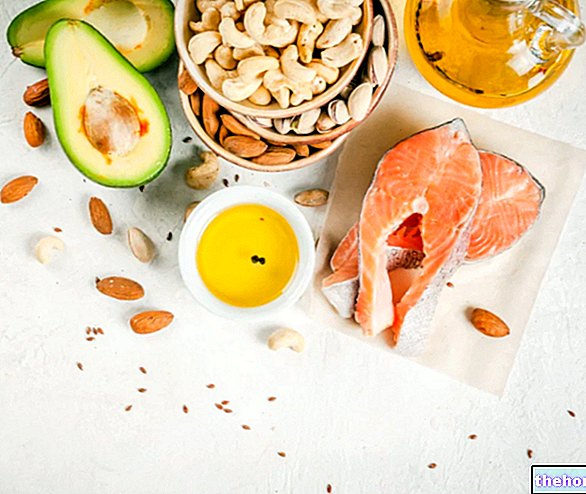Many foods that contain it. These are the best foods to eat when you have a cold.
and flu symptoms are not the only virtues of this vitamin. It also has a strong antioxidant power, lowers cholesterol, prevents the risk of heart disease and reduces that of heart attack. In addition, it contributes to the production of collagen, keeps connective tissues healthy, stimulates wound healing, prevents bleeding and facilitates bone repair in the event of a fracture.Last but not least, it is very useful in case of anemia because it facilitates the absorption of iron.
In this case, the advice is to add a citrus juice to your breakfast, in order to facilitate the intake of iron.
Vitamin C also facilitates the absorption of vitamin E, which is also very important because it protects the skin from harmful ultraviolet rays.
Vitamin C also helps to preserve the health of the teeth.
Unfortunately, our body easily eliminates it through the urine, so to keep its level always high it is necessary to take it regularly through a correct diet.
Equally important, to maintain a generic and optimal state of health, also to keep the balance of the intestinal microbiota under control.
contain, in varying quantities, vitamin C.According to the Italian Society of Human Nutrition, the recommended daily intake is 105 mg for men and 85 mg for women.
Unfortunately, being very delicate and unstable, it deteriorates and decreases considerably with cooking or with too long storage over time. It is therefore better, when possible, to consume raw foods or immediately after having cut and prepared them.
Those that have the most are kiwis, citrus fruits, grapes, tomatoes, peppers, berries, green vegetables and vegetables from the cabbage family. Most of the foods rich in vitamin C are also found in the list of healthy and cheap foods that must never be missing within a balanced diet.
Not all of these foods, however, are available in the months of November and December. Here are the ones that, on the other hand, can be found for sale or in your garden during this period.
The presence of vitamin C can be one of the requirements to consider when choosing the healthiest takeaway foods to order.
Kiwi
Ripening begins in November and its most popular variety is Hayward. In this fruit the quantity of vitamin C is much higher than that of citrus fruits, so much so that it reaches 85 mg per 100 grams.
Oranges, tangerines and grapefruits
The winter fruit par excellence, however, the orange continues to be available until late spring. There are many types to choose from: Tarocco, Moro, Sanguinello, Newhall, Navelina, Valencia and Ovale. They differ in color, size and taste. all of them can be consumed not only in solid form, but also as juices and jams.
Their vitamin C intake? On average it is about 50 mg per 100 grams, but some varieties even exceed 69 mg.
Smaller and much sweeter than oranges, mandarins are also rich in vitamin C, as they contain 42 mg per 100 grams. Even more Clementines, which reach 58.8 mg.
Grapefruit is also from the same family, usually drunk in the form of juice. In this case, the concentration of vitamin C is equal to 48 mg per 100 grams.
Lemon
Due to its tart flavor, this citrus fruit is not commonly eaten like the others, despite its high vitamin C content.
Instead of ingesting it directly, you can drink the juice or combine it with different recipes of meat, fish or desserts, while taking into account that cooking drastically decreases the vitamin quantity equal, raw, to that of oranges.
Grape
This fruit arrives on our tables as early as September, but continues to be available throughout the autumn. Its juice can contain up to 340 mg of vitamin C per 100 grams.
Broccoli, cauliflower, kale and Brussels sprouts
Not always very popular, especially by children, broccoli is however one of the foods richest in vitamin C. They contain, in fact, about 77 mg per 100 grams if eaten raw and 64 mg if boiled.
Cauliflower belongs to the same family, which is also an excellent ally, albeit a minor one, for the intake of vitamin C. Its raw content in fact stops at 48.2 mg.
Kale is less well known. Extremely rich in vitamin C (120 mg per 100 g from raw), it easily helps to cover the recommended daily amount.
Finally, Brussels sprouts contain 81 mg when raw or 52 per 100 grams cooked.
The vegetables of the cabbage family, in season in autumn and winter, are among the foods indicated to support cognitive functions and improve memory.
Parsley
One of the most used aromatic herbs, it is not part of the vegetable family, much less that of fruit, but it is an authentic concentrate of vitamin C, given that 100 grams are equivalent to 133 mg.
Of course, being used in the kitchen not as a food in its own right but as a flavoring for dishes, the quantity ingested every single time is minimal, but this does not mean that it does not make its own contribution to general well-being.
When choosing foods rich in vitamin C, give priority to functional foods that improve skin aging.




























